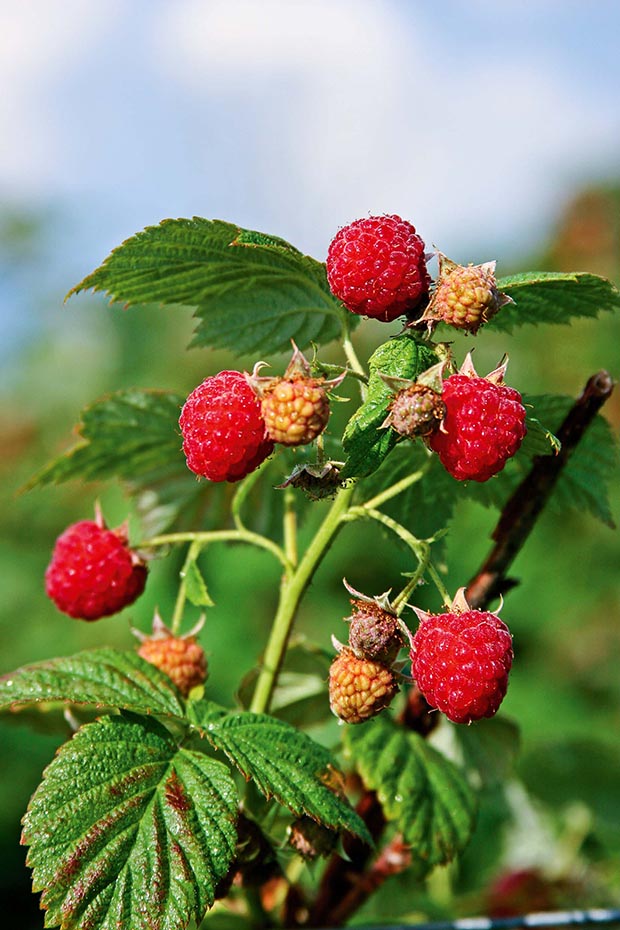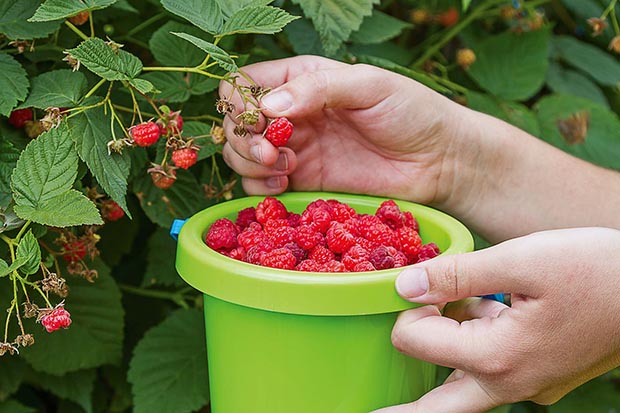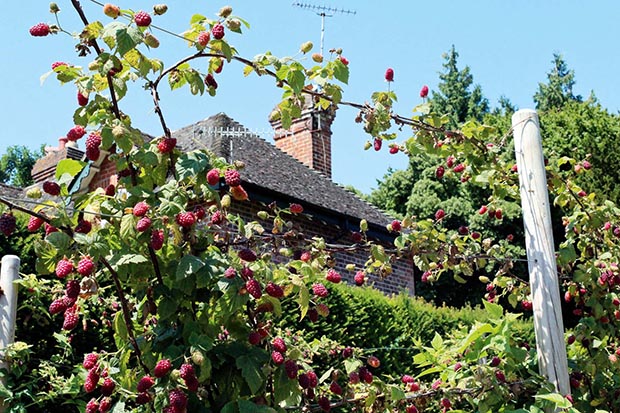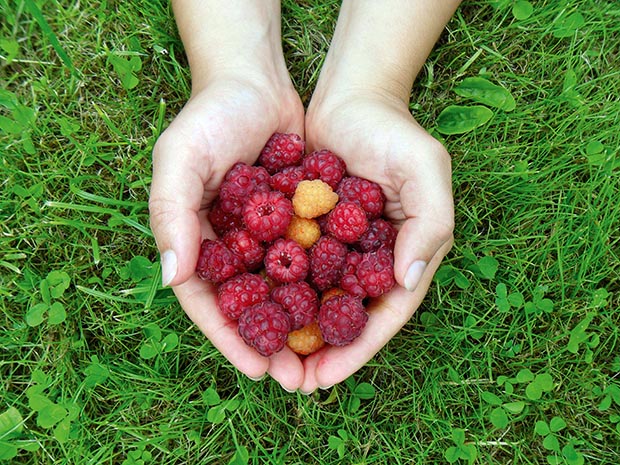Tips for growing, pruning and picking your best-ever raspberry crop

Raspberries are a great option for the lifestyle block. Ben looks at how to get the best production.
Words: Ben Gaia
You don’t need to have a large garden plot or a block to grow raspberries. Many people choose to grow raspberry plants along a property fence line or the side of a deck, or as an edible hedge.
1. Soil
They perform best in well-drained soil. If yours is heavy clay or sand, feed it with composted manure at the time of planting. Good soil preparation is essential to keep your canes fruiting for years to come so weeds and grass around the stems should be pulled, a tricky job with spiny caned-varities, but many modern types have fewer or no spines. Plants should be spaced 40cm apart.

2. Pruning
Pruning raspberries is a whole science in itself – a bit like rocket science, but easier. Raspberries produce fruit on 2-year-old canes, which die after the crop has matured.
3. Canes
Cane-type raspberries should be allowed to produce long, unbranched canes rather than branched canes like the black and purple varieties. The new canes remain unpruned during their first season’s growth. After the old canes die they should be removed as early as possible in order to remove sources of disease. Ideally this is done in autumn.
4. Floricanes
Summer fruiting or floricane-types need careful pruning. Recently fruiting canes should be cut to ground level after fruiting, then the six strongest new shoots selected and tied upright to a post or wire frame. All other shoots should be removed and the plot fed. This process is the key to success with traditional raspberries.

Tummelberries.
Ask your local Tree Crops Association for a berry pruning demonstration day as it’s one of those things that’s easiest to learn when it’s done in front of you.
5. Primocanes
Autumn fruiting or primocane-types are easy. They are cut right back in mid-winter and shoot back up the following season. Cut back all canes to ground level and feed the plot.
6. Hybrids
These act more like brambles and need to be heavily pruned and firmly wrestled around wires or posts each year to stop them taking over the entire world. For example, when growing tummelberry plants, support the stems on a framework of wires stretched between sturdy 1.8m (6’) posts, or train them up against a trellis or wall. Wrangle the plants to the post and lassoo a stout string around the beast.
7. Eating
Preparation is simple: pick and eat fresh through the season. They are the traditional accompaniment to strawberries and red currants in summer and blackberries in autumn. Serve fresh with cream or ice cream, or decorate cakes and pavlovas.

Raspberries freeze well, or you can make classic jams. Raspberries cook up rather like plums so you could also try a berry pie, or the easy-to-make sauce known as coulis which is popular with masterchefs up and down the land. Put 100g raspberries, 25g of sugar and 1tsp of lemon juice in a blender and whizz until smooth and the sugar is dissolved. You can sieve if you don’t want to have any ‘bits’ in your coulis.
3 TIPS FOR HARVESTING
1. Pick berries every day. It is important for optimal raspberry plant care to visit your raspberry patch daily when the fruit is ripening. Raspberries should be picked when ripe, every day, or every second day.
2. Do not allow berries to become overripe and rot on the bushes. If left to decay they will attract insects and mould.
3. Snip off any dud or over-ripe fruit clusters. This is like dead-heading and will bring on more berries. The magical things is that the more you pick, the more you get.
Love this story? Subscribe now!
 This article first appeared in NZ Lifestyle Block Magazine.
This article first appeared in NZ Lifestyle Block Magazine.
